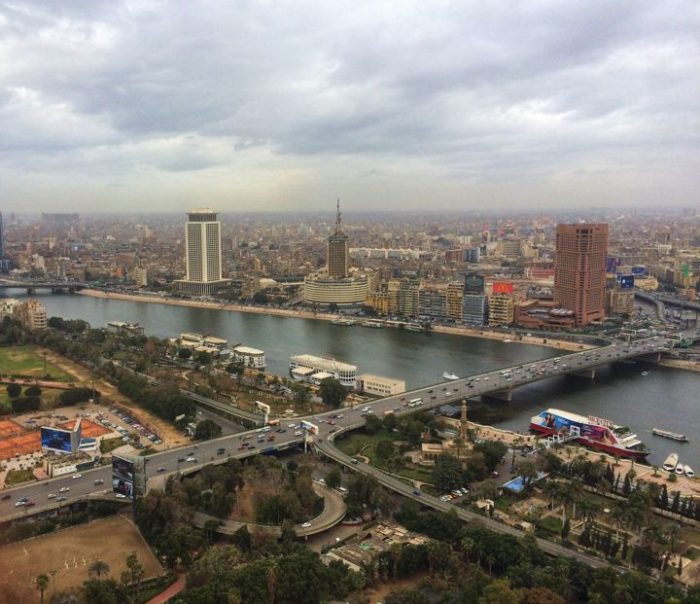
The study “Diffusion of Development Journalism Inside Egyptian Newsrooms” by Rasha Allam from the American University in Cairo and Ahmed el Gody from Orebro University looked at how development journalism had diffused among the editorial and journalist body in Egyptian newsrooms after the 2011 Arab Spring.
The Arab Spring in 2011 led not only to the collapse of the political system under president Hosni Mubarak, but also the Egyptian newspaper industry, which was traditionally deeply tied to the state. Poor choises in covering the protests led to increase, not decrease in sectarianism, and the news during the time were unreliable and politically motivated. By 2016, 80 percent of the readership was lost.
To save the industry, the new, since 2018, Supreme Council for Media Regulation (SCMR) promoted the concept of development journalism (DJ). The term was older, from 1960s and already known in the media of the region, but it was appropriated by SCMR following president Al-Sisi’s remark that the media’s role was to enlighten the public of government mega-projects and achievements.
Thus, the SCMR sought to support the government in troubled times. This has also led some scholars to criticize the approach as having a danger to devolve into government propaganda.
Development journalism is seen as a critical form of journalism that is also solution-oriented. Development journalists feel an obligation to better the society with a more holistic, broader perspective without compromising core journalistic values.
The study at hand sought to investigate how well the journalists working in Egypt understood the new government mandates for DJ, and whether they saw it as enhancing their work or restricting it. Four newsrooms, representing a total of 80 percent of newspaper circulation in the country, were studied with a total of thirty-seven (37) semi-structured interviews. The interviewees occupied varied positions in the newsroom from editors-in-chief to reporters.
The four newsrooms, Al-Ahram, Al-Masry Al-Youm, Al-Wafd, and Youm7 differed in how they perceived and implemented DJ. Al-Ahram embraced DJ very traditionally, framing the president in and government policies in positive tones. The managers in Al-Ahram saw DJ as a core component in their journalistic practices, and they saw DJ as a win-win situation in regards to government and the newsroom.
In Al-Masry Al-Youm, DJ was not seen as a top-down process, but journalists used task force teams to generate ideas for stories, and feedback from the audience, as monitored in social media, played part in the process. Similarly, Al-Wafd was engaged with the audience, monitoring audience responses for DJ story ideas.
The privately owned Ýoum7 used a modified top-down model called the “dynamic wheel network management structure”. In it, there are two meetings a week where topics that affect the public opinion and how to cover them are discussed.
Youm7 also utilizes a “smart content” team to surf popular online locations for ideas about what the audience is interested. Finally, in the ground level, the journalists present their work to department editors, who in turn take it higher up to managing editors, editors, and the editor-in-chief.
There was some criticism, or suspicion, of DJ among the interviewees. The management in Al-Masry Al-Youm saw the positive aspects of DJ in more access to government sources, but saw a danger of content control.
In Al-Wafd, the situation between the government and newspaper had improved, but according to them DJ depended too much on the attitude the government has on the newspaper. In Youm7, it was reported that the government was sometimes suspicious of journalists snooping for information.
The positive tone Al-Ahram took on government collaboration was seen by the authors as partially undermining the goal of DJ. It was a newspaper that saw decreasing circulation during the Arab Spring as a result of uncritical coverage on the government. The journalists working for the paper also criticized the top-down model.
In other newsrooms, DJ had been introduced under different names and with less top-down control. Sharing responsibility with the journalists had instilled a sense of collective responsibility. Overall, the top-down structure was particularly disliked by young journalists.
The authors conclude that the old DJ that had started in 1960s may have outlived its usefullness, and the approach in state media to coverage may need revisiting. In contrast, private, opponent and independent media look at DJ differently, more in line with DJ theory and less in the criticized model of overt government control.
The article “Diffusion of Development Journalism Inside Egyptian Newsrooms” by Rasha Allam and Ahmed el Gody is in The International Journal of Press/Politics. (Open access).
Picture: Cairo Tower by Ahmed Ezzat.
License Unsplash.